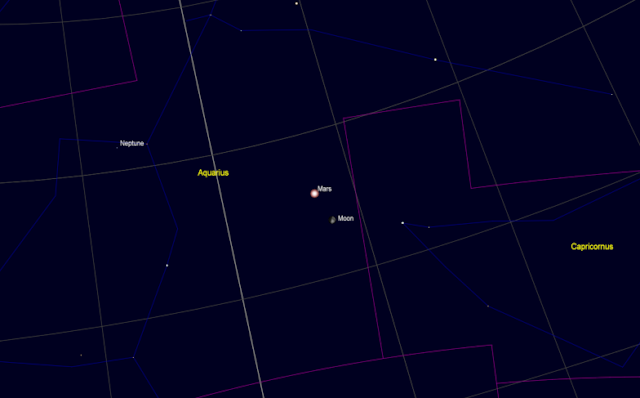It was discovered on January 17, 1948 by an American astronomer named Carl Wirtanen at Lick Observatory just outside of San Jose. It was exposed photographically and found through observing its proper motion relative to the background.
 |
| Comet 46P's coma extends more than 45 arcminutes in this picture taken on November 26, 2018. Gerald Rhemann (Namibia) |
46P will be within 11.5 million kilometers of Earth at its closest approach making it the 20th closest comet since the 9th century.
The reason there is excitement over 46P is that it may be bright enough to see with the naked eye in mid-December. As of November 29, 2018 in the Comet Observers Database: https://cobs.si/ the average magnitude for observers is 5.8. In dark sites within 30 minutes of Calgary I tend to be able to see to magnitude 5.0. Each increase in the magnitude number is approximately 2.5 times dimmer.
As you can see from the chart below the magnitude has been steadily becoming brighter. Magnitude 14 is in the range of Pluto which is on my bucket list for backyard astronomy in my largest (14") telescope. It will be very difficult. I can see magnitude 10-12 faintly through a moderately large telescope. 6-10 objects are generally accessible through binoculars and less than 5 can reach the naked eye. Some people can reach 6.5 with their naked eye at a very dark site with no Moon. At my location is suburban Calgary my limit is about 4.3 with my eyes.
 |
| Light Curve of Comet 46P/Wirtanen - as of November 29 |
As the comet gets closer to us it will become brighter reaching its peak on December 16. It will also be with the Pleiades (M45) in a wide field binocular view on this evening.
Where can you find the comet?
I have created a PowerPoint presentation that maps the comet between November 29-December 21. If you can make your way around the late Autumn sky you should have no trouble finding it. The stars are mapped to magnitude 6.5 in the charts found below.
Comet 46P/Wirtanen Finder Charts
I hope you have success in finding this comet!











